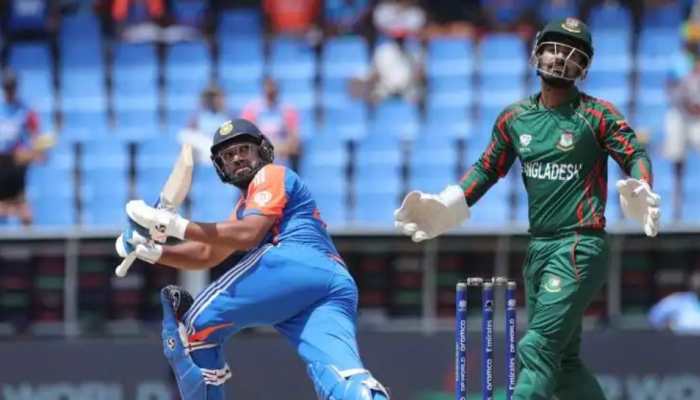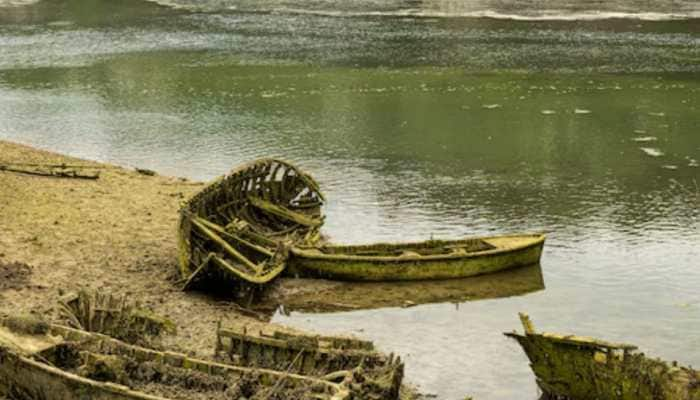Shravan 2017: 10 Biggest Shiva temples in South India
Here’s taking a look at 10 biggest temples in south India built in reverence of Lord Shiva.
Trending Photos
) Pic courtesy: Thinkstock image for representation purpose only.
Pic courtesy: Thinkstock image for representation purpose only. The auspicious month of Shravan, dedicated to Lord Shiva has begun. Devotees in the northern part of India will celebrate this month with utmost devotion and dedication. The Southern part of the country will celebrate this month after a fortnight owing to the difference between the Purnimant and Amavaysyant calendar.
Mondays are extremely auspicious and devotees offer prayers and observe fast. And on this occasion, we will take you through some of the grandest temples of Lord Shiva in South India.
Here’s taking a look at 10 biggest temples in south India built in reverence of Lord Shiva.
1) Brihadeshwara Temple in Tanjavur
Built by Raja Raja Chola I, the Briahadeshwara or the Tanjavur Periya Koil is a classic specimen of the living Chola art. The temple dedicated to Lord Shiva is over 1000 years-old and is listed on the UNESCO World Heritage Sites. The main sanctum sanctorum has a 29 Ft tall Shiva Linga. One can find a 13 Ft Nandi (sacred bull) near the final entrance to the main temple complex. The Vimana or tower of this ancient temple is stands 198 Ft tall. The architecture and intricate carvings on the walls are truly matchless.
2) Thiravanaikaval Temple in Thrichy (Water)
The temple dedicated to Lord Shiva that represents the water element of nature is known as Jamukeshwara and is located in Thiravanaikaval near Thrichy in Tamil Nadu. Believed to be around 1800 years-old, the Thiravanaikaval Temple is home to the Akhilandeshwari form of Goddess Pavati and she is worshipped as Lord Shiva’s disciple here.
3) Meenakshi Sundareshwara Temple in Madurai
This magnificent piece of spiritual architecture in Tamil Nadu’s Madurai city, has been in existence for over thousands of years. The origin of the temple dates back to the 1600 B.C and is a classic specimen of Vedic tradition. The temple complex has temples dedicated to Meenakshi and her divine consort Sundareshwarar (Shiva).
4) Vadakkunathan Temple in Trisshur
Beleived to be built in the seventh century, the Vadakkunathan Temple in Kerala’s Trisshur is dedicated to Lord Shiva. The temple’s architecture reflects Kerala’s style with monumental towers on all four sides and a Kuttambalam. Devotees from various parts of the country visit the temple during Maha Shivaratri. Over one Lakh lamps are lighted on the day of the festival.
5) Mahabalaeshwara Temple in Gokarna
Situated in the Gokarna region of Karnataka on the shores of the Arabian Sea, the Mahabaleshwara Temple has a Atma Linga, also known as Prana Linga. It is the Linga believed to have been given to Ravana by Lord Shiva himself. The demon king of Lanka, who was instructed not to place the Linga on ground, was duped by Ganesha while enroute to him home. The Linga, after being placed on the ground by Ganesha, could not be moved by Ravana. On realising Shiva’s power, Ravana named his Mahabala and hence the name Mahabaleshwara. The idol is believed to be over 1500 years old.
6) Murudeshwara Temple in Murudeshwara
This is the place where the cloth placed on the Atma Lingam gifted to Ravana by Lord Shiva himself. Situated on the shore of Arabian Sea in northern Karnataka, Murudeshwara Temple has the second tallest Shiva statue which stands 123 ft tall and a tower which is 249 ft in height.
7) Gangaikonda Temple in Tanjavur
Built by Rajendra Chola I, son and successor of Raja Raja Chola, the Gangaikonda Temple in Tanjavur is one of the greatest specimens of the Chola art. The temple complex has a number of sculptures carved out of stone and each exhibit the aura of the majestic times of royal past.
8) Uma Maheshwara temple in Yaganti
Situated in the Kurnool region of Andhra Pradesh, the Uma Maheshwara temple in Yaganti was built during the 5th and the 6th century. Dedicated to Lord Shiva, the temple has a Nandi that has water coming out from its mouth. The source of the water hasn’t been discovered yet.
9) Sangamaeshwara Temple in Alampur
Originally built on the confluence of the Krishna and Tunghabhadra rivers, the Sangamaeshwara Temple, believed to have been built by Pulakesin I, was dismantled from its site during the Srisailam Dam project and rebuilt in its current location in Alampur. The temple that derives its name from the confluence of the Krishna and Tunghabhadra rivers, is a classic specimen of the Chalukyan period.
10) Hoysalaeshwara Temple in Halebid
Built by Vishnuvardhana of the Hoysala empire in the 12th century, the Hoysalaeshwara Temple in Halebid narrates the glorious architectural genious of the ruler of that time.
Stay informed on all the latest news, real-time breaking news updates, and follow all the important headlines in india news and world News on Zee News.
Live Tv







)
)
)
)
)
)
)
)
)
)
